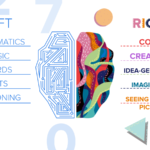Eat That Frog!
I know what to do and how important it is for me, but still, I am not doing it (procrastinating).
Procrastination is a challenge we have all faced at one point or another. For as long as humans have been around, we have been struggling with delaying, avoiding, and procrastinating on issues that matter to us.

A simple graph explains the behavior of students during their semester. He will be relaxing during the initial time and then pushing hard towards the end of the semester and experiencing panic and stress.
The same behavior is seen in adults as well. Some of us even give reasons that we perform better when there is less time which is not always true.
Procrastination isn’t pure laziness. Lazy people simply don’t do anything and are just fine with it. Procrastinators, however, have the desire actually to do something but can’t force themselves to start. They want to do it but just can’t figure out how.

So what is the solution to this, and how can one procrastinating figure out how to start?
I am going to share the world-famous Eisenhower Method, which today helps us prioritise urgency and importance.
Through the Eisenhower principles of planning, prioritising, delegating, and scheduling, you will start to see the right things to do to achieve your goals and be more productive.
It is a system that makes you separate all your activities into four priority levels, one of which (Not Important/Not Urgent) is immediately dropped, so it’s only three categories of attention-worthy tasks to focus on (see the picture below).

- “Important” and “Urgent” tasks. These receive the highest priority level and should be your primary focus to complete as soon as possible (most often on the same day).
- “Important” but “Not Urgent” tasks. These are the long-term goals and tasks that are important but don’t have a firm deadline yet. You should schedule them promptly, doing the most urgent ones right after you’ve finished everything from the “Do” quadrant.
- “Not Important”, but “Urgent” tasks. These tasks are the ones you can delegate to other professionals or appoint to complete yourself if you must, but only after your first and second quadrant tasks are completed.
- “Not Important” and “Not Urgent” tasks. The tasks are placed in the “Delete” quadrant because you should eliminate doing them. This may vary due to the perception of urgency and importance, but mainly these tasks don’t even need to be done and would be considered a complete waste of time by most people.
Eat That Frog
- 1. “Your ‘frog’ is your biggest, most important task, the one you are most likely to procrastinate on if you don’t do something about it.”
- 2. “The first rule of frog eating is this: If you have to eat two frogs, eat the ugliest one first.”
Try this simple method, and after weeks you will find you are more efficient & productive.
You can even book a call with us and check how can we work together. While working with me, you will learn how to stop procrastination and increase your productivity. Achieve your desired promotion or business growth without disturbing work-life balance.
Our Enrolment Advisors are all professional certified coaches, and are happy to assist you with your decision-making process, as well as help you choose the program that suits your lifestyle, schedule and budget.
If you have any questions our caring coaches will help you decide what’s best for you.
They can also assist by giving you a more in-depth explanation of The Deep Transformation Coaching program and whats included. How to Stop procrastination





Comments